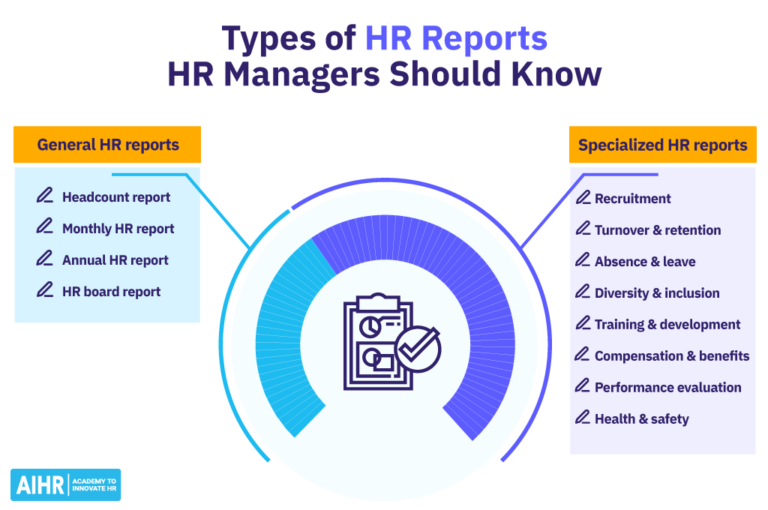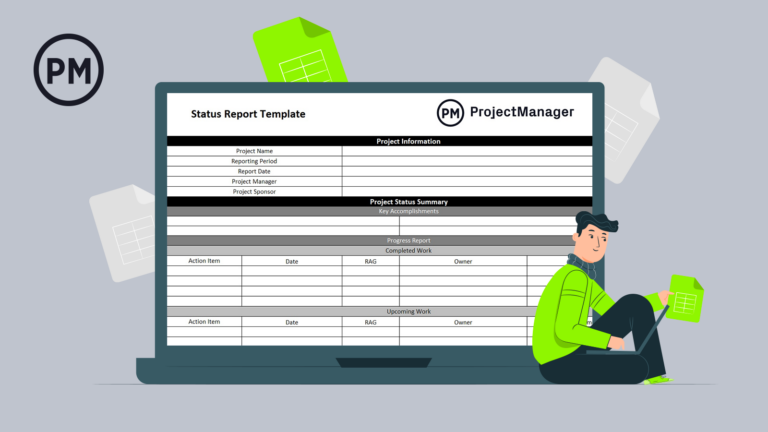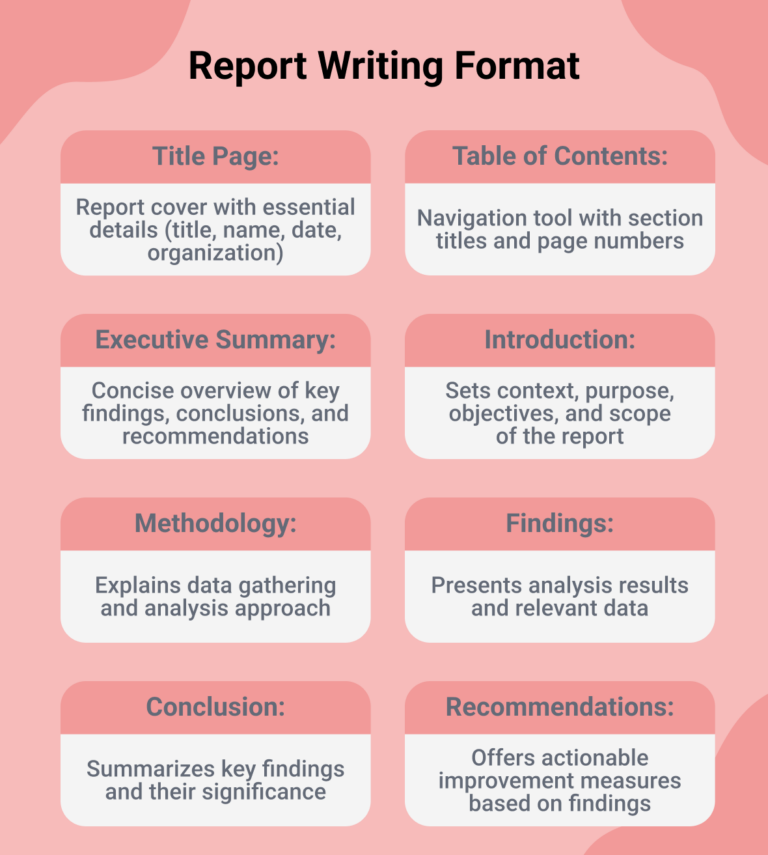7 Reports: A Comprehensive Guide to Writing Impactful Documents
In the realm of communication, reports hold a significant place. They convey information, present findings, and influence decision-making. Understanding the nuances of report writing is crucial for effective communication and professional success. This guide delves into the essential aspects of report writing, providing a comprehensive overview of its types, elements, and best practices.
From understanding the purpose and characteristics of different report types to mastering the art of data visualization, this guide covers all aspects of report writing. It emphasizes the importance of tailoring reports to specific audiences, ensuring clarity, and adhering to ethical considerations. By exploring these concepts, you will gain the knowledge and skills necessary to craft impactful reports that drive informed decision-making.
Seven Types of Reports
Reports are crucial documents that convey information, findings, and recommendations based on research, analysis, and data. There are various types of reports, each tailored to specific purposes and audiences.
To help you navigate the diverse landscape of reports, we’ve compiled a table outlining seven common types, their purposes, and key characteristics:
| Type | Purpose | Characteristics |
|---|---|---|
| Informational Report | Provide objective information on a topic | – Presents facts and data without bias or recommendations – Often used for research papers, technical reports, and white papers |
| Analytical Report | Examine data and draw conclusions | – Involves analyzing data to identify trends, patterns, and insights – Typically used for market research reports, financial analysis, and risk assessments |
| Persuasive Report | Convince readers of a particular viewpoint | – Presents a strong argument supported by evidence – Used in sales proposals, marketing campaigns, and policy briefs |
| Feasibility Report | Assess the practicality of a project or idea | – Explores the potential benefits, risks, and costs of a proposed action – Commonly used for business plans, project proposals, and investment decisions |
| Progress Report | Track the progress of a project or task | – Provides updates on milestones achieved, challenges encountered, and next steps – Useful for project management, team collaboration, and stakeholder communication |
| Recommendation Report | Provide specific recommendations for action | – Presents findings and analysis, followed by concrete suggestions – Used in consulting reports, policy recommendations, and strategic planning |
| Justification Report | Explain and justify a decision or action | – Provides reasons and evidence to support a particular course of action – Commonly used for budget requests, policy changes, and project approvals |
Essential Elements of a Report
A comprehensive report consists of several key elements, each serving a specific purpose in presenting information effectively. These elements include the introduction, body, conclusion, and references.
The introduction provides an overview of the report’s purpose, scope, and methodology. It sets the context and engages the reader, establishing the need for the report and its significance.
The body of the report contains the main content, divided into sections or chapters. Each section addresses a specific aspect of the topic, presenting data, analysis, and findings. The body should be well-organized, with clear transitions between sections to guide the reader through the report.
The conclusion summarizes the key findings and recommendations of the report. It restates the report’s purpose and highlights the main takeaways, providing a concise overview of the report’s content.
Finally, the references section lists the sources used in the report. This includes books, articles, websites, and other materials that support the information presented in the report. The references section allows readers to verify the accuracy of the report and explore the topic further.
Structuring Reports for Different Audiences
Customising reports for specific audiences is crucial. Consider their technical expertise, decision-making needs, and cultural background. For instance, a report for technical experts might include detailed technical data, while one for decision-makers could focus on key findings and recommendations.
Tailoring to Technical Expertise
For audiences with high technical expertise, provide in-depth analysis, detailed data, and technical jargon. Use tables, charts, and graphs to present complex information. For those with limited technical knowledge, simplify the language, provide context, and use clear and concise explanations.
Meeting Decision-Making Needs
Align the report structure with the decision-making process. Include an executive summary for quick overviews, followed by detailed sections that provide supporting evidence and analysis. For complex decisions, consider using a problem-solution format or a cost-benefit analysis.
Considering Cultural Background
Be mindful of cultural differences that may affect how audiences perceive and interpret reports. Adapt the report’s tone, language, and visuals to resonate with the specific cultural context. For example, consider the use of humor, formality, and the inclusion of cultural references.
Visualizing Data in Reports
Yo, visualizing data is the bomb for making your reports fly! It’s like giving your audience a visual feast that makes your findings pop.
First off, choose the right charts and graphs. Like, a pie chart for showing parts of a whole, or a bar chart for comparing different values. Make sure they’re clear and easy to understand, like a crystal-clear lake.
Next, design them to look slick. Use vibrant colors and cool fonts that make the data dance off the page. But don’t overdo it, or you’ll end up with a visual migraine.
Finally, weave those visualizations into your report like a master chef. Use them to support your arguments, illustrate trends, and make your findings come to life. It’s like giving your report a visual soundtrack that amps up the impact.
Best Practices for Report Writing

Report writing is a crucial skill for effective communication in various fields. To produce impactful reports, it’s essential to adhere to best practices that enhance clarity, organization, and persuasiveness.
Clear and Concise Language
Effective reports use clear and concise language that is easily understandable by the intended audience. Avoid jargon and technical terms unless necessary, and use simple sentence structures and precise word choices. Ensure that the report is free of grammatical errors and typos.
Logical Organization
Organize your report logically, with a clear introduction, body, and conclusion. The introduction should provide an overview of the report’s purpose, scope, and key findings. The body should present the details of the report, supported by evidence and analysis. The conclusion should summarize the main points and any recommendations or actions that need to be taken.
Supporting Evidence
Support your claims and findings with credible evidence from reliable sources. This can include data, research, case studies, or expert opinions. Use citations and references to acknowledge the sources of your information.
Proper Grammar and Formatting
Proper grammar and formatting are essential for professional reports. Use correct grammar, punctuation, and capitalization throughout the report. Ensure that the report is well-formatted, with appropriate headings, subheadings, and white space to enhance readability.
Examples of Well-Written Reports
Well-written reports adhere to these best practices and effectively communicate the intended message. Some examples include:
* Annual reports that provide a comprehensive overview of a company’s performance and financial health.
* Research reports that present the findings of scientific studies or investigations.
* White papers that provide in-depth analysis and insights on a particular topic.
Tools and Techniques for Report Creation

Innit, blud? Tools and techniques are like your secret weapons when it comes to smashing out top-notch reports. Let’s take a cheeky peek at some of the best bits.
Word Processing Software
Word processing software is like your digital notepad on steroids. It’s where you can type up your report, format it like a boss, and add all the fancy bits like headings, bullet points, and tables. Microsoft Word and Google Docs are two of the most popular options, but there are loads of others out there.
Data Visualization Tools
Data visualization tools are like the magic wands of report writing. They turn your boring old data into snazzy charts, graphs, and maps that make your report way more interesting and easy to understand. Tools like Tableau, Power BI, and Google Data Studio are all worth checking out.
Collaboration Platforms
Collaboration platforms are like your virtual meeting rooms. They let you work on reports with your mates in real-time, even if you’re all in different places. Google Drive, Microsoft Teams, and Slack are all great options for collaborating on reports.
Ethical Considerations in Report Writing
When creating reports, it’s crucial to consider ethical implications to ensure accuracy, objectivity, and respect for confidentiality.
Accuracy and objectivity demand presenting information truthfully, without bias or personal opinions. Avoid distorting data or omitting relevant details that could alter the report’s conclusions. Strive for impartiality by considering multiple perspectives and presenting facts fairly.
Respecting confidentiality involves protecting sensitive information from unauthorized disclosure. Obtain consent before using personal or confidential data and anonymize it whenever possible. Be mindful of the potential impact of your report on individuals and organizations, and take steps to minimize harm.
Avoiding Bias
Bias can arise from personal beliefs, preconceptions, or external influences. To minimize bias:
- Acknowledge your own biases and actively work to overcome them.
- Seek diverse perspectives and consult with experts to broaden your understanding.
- Review your report critically to identify any potential biases and adjust accordingly.
Q&A
What are the key elements of a comprehensive report?
The key elements of a comprehensive report include an introduction, body, conclusion, and references. The introduction provides an overview of the report’s purpose and scope, the body presents the findings and analysis, the conclusion summarizes the main points and provides recommendations, and the references list the sources used in the report.
How can I tailor my report to a specific audience?
To tailor your report to a specific audience, consider their technical expertise, decision-making needs, and cultural background. Use clear and concise language, provide context and background information as needed, and present the information in a way that is relevant and engaging to your audience.
What are some ethical considerations to keep in mind when writing a report?
When writing a report, it is important to consider ethical considerations such as accuracy, objectivity, and confidentiality. Ensure that the information in your report is accurate and supported by evidence, avoid bias and personal opinions, and respect the privacy of individuals and organizations.





